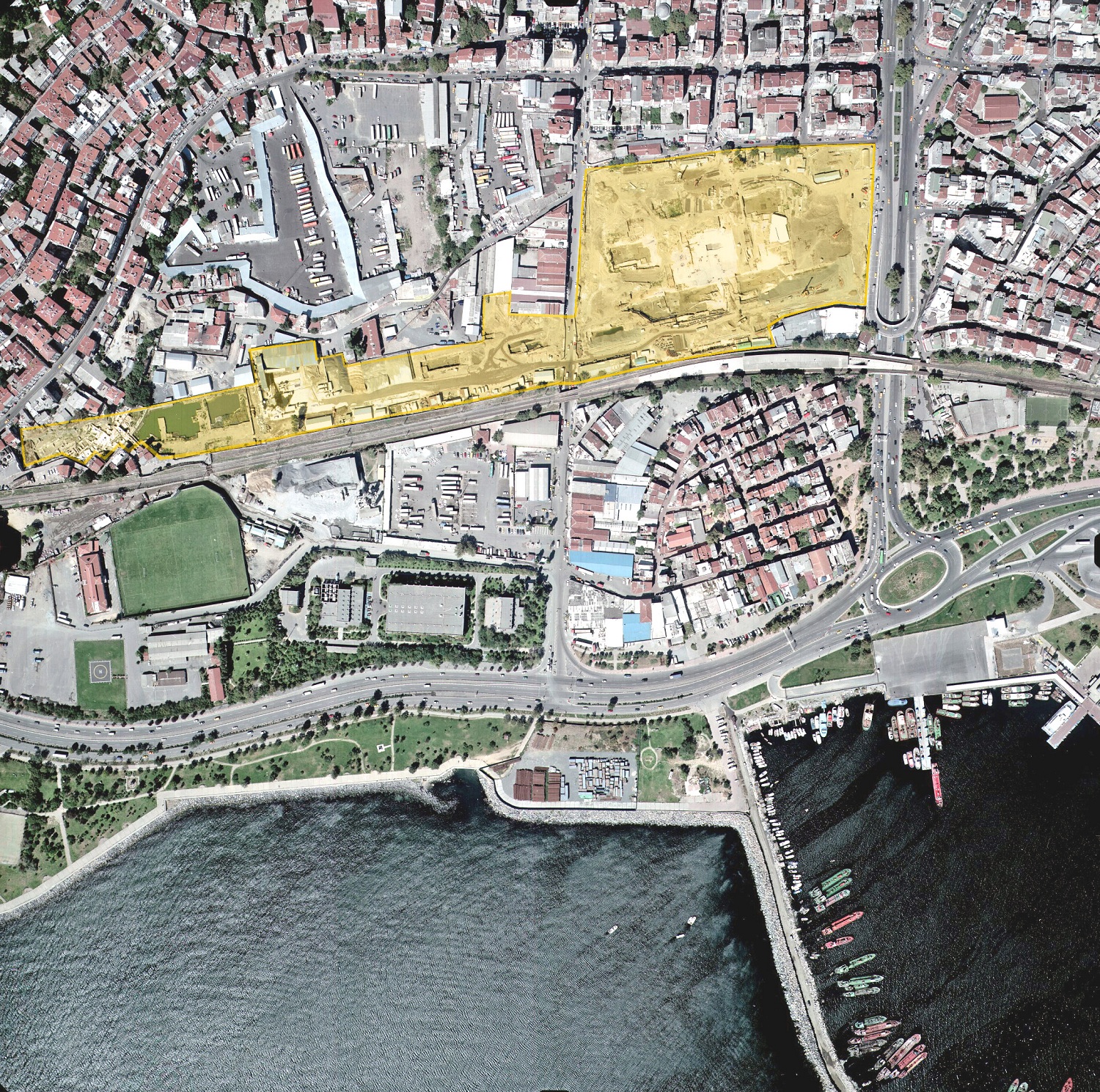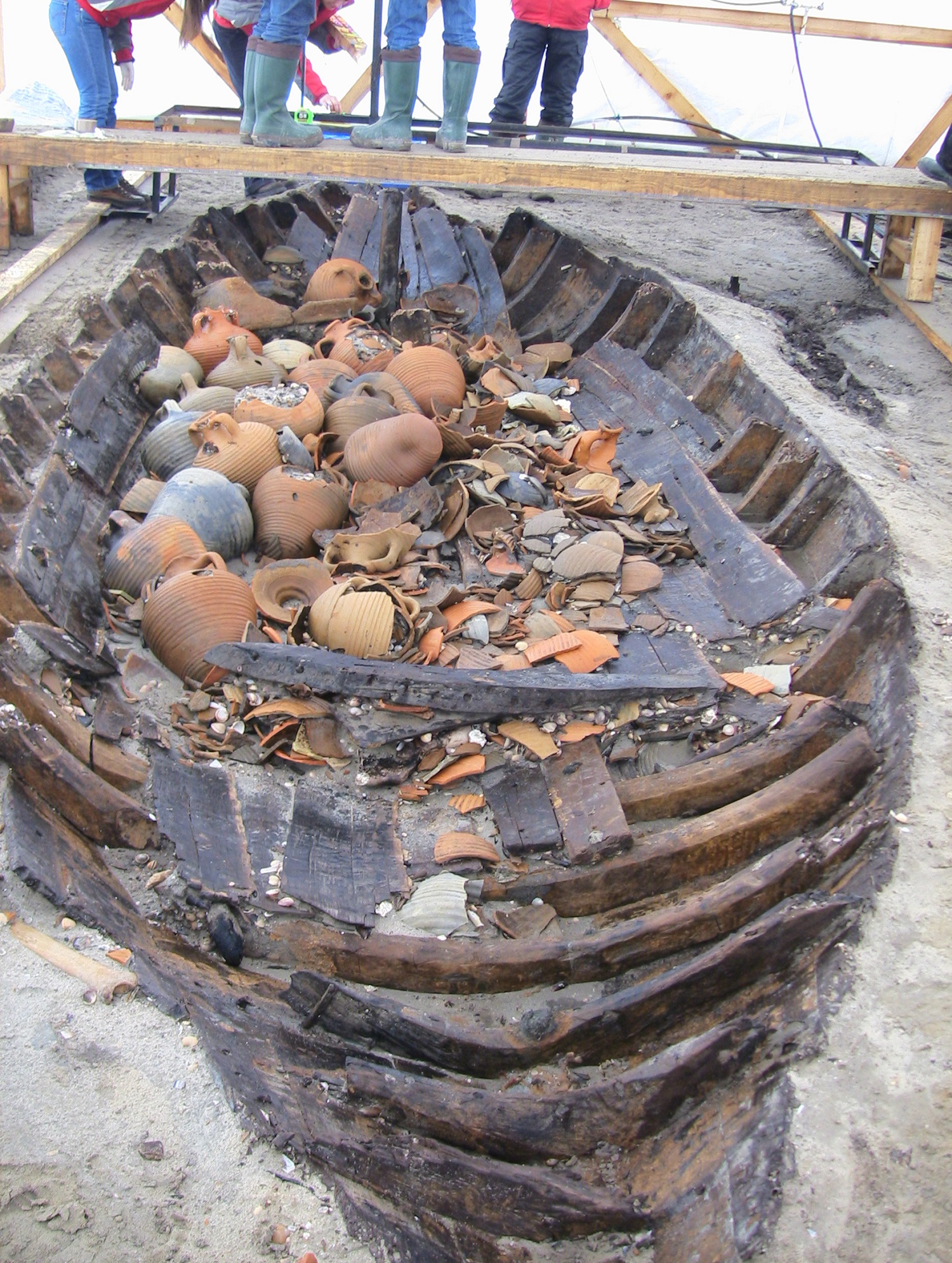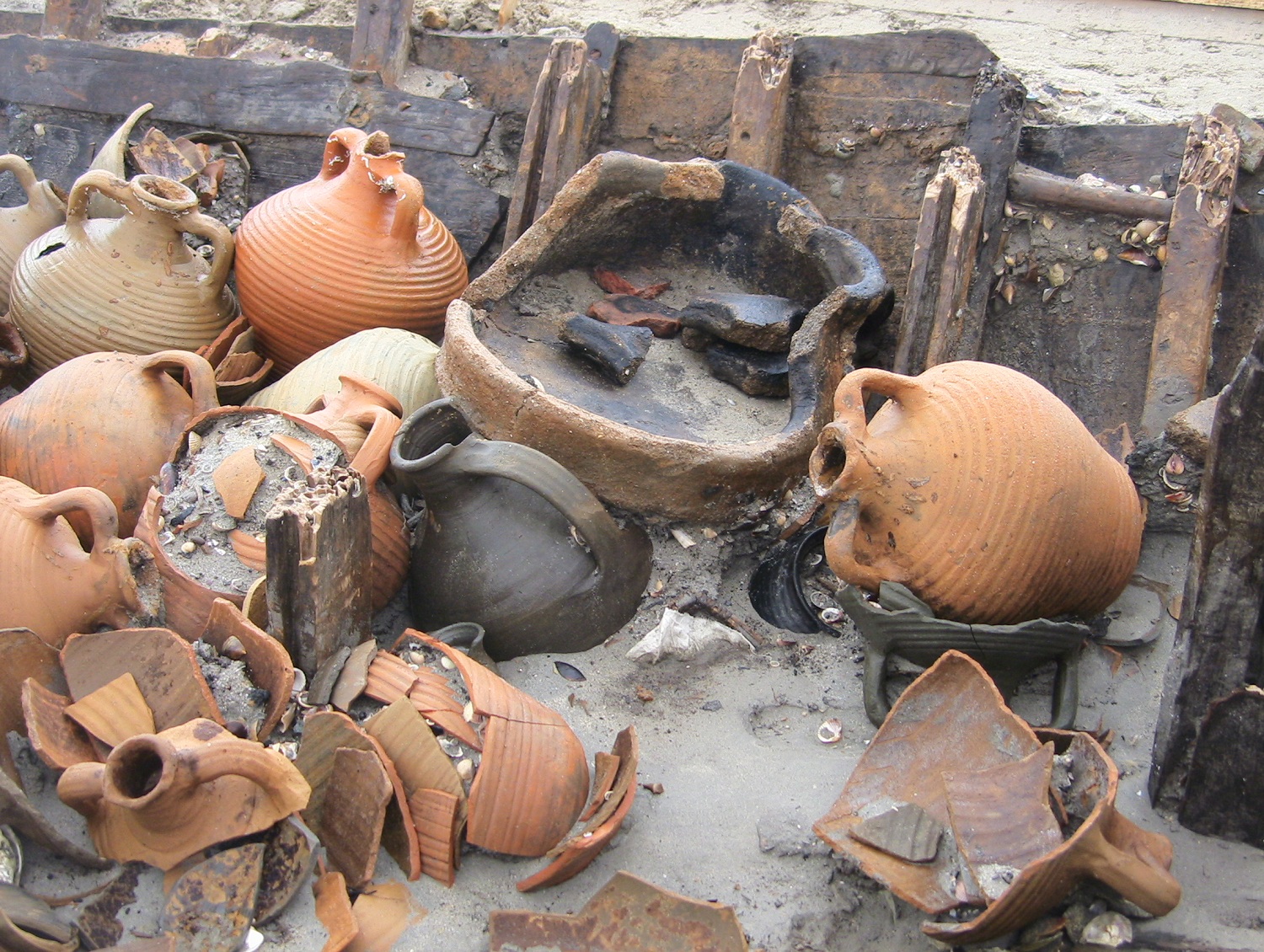İstanbul holds a leading place among research areas of contemporary sociology and urban design. In the wide spectrum of research fields, ranging from archaeology to history, from art to literature, and from religious culture to daily life, the city provides answers to humanity’s fundamental queries. Is this merely a coincidence or a mesh of problems in dire need of a resolution, stratified throughout history from the past to present? If our answer entails resolving this mesh of problems on the scale of İstanbul, then we can certainly call for a common denominator through which diverse opinions and approaches can counter with one another. The Annual of İstanbul Studies thus begins its publishing life to compensate for this need in terms of modern scientific thought.
One of the articles in the Annual explores the shipwrecks revealed by the Marmaray Railway project.

Aerial view of Yenikapı coastline and the excavation area from the east.
During the construction of the Marmaray Railway and Metro stations in Yenikapı between 2004–2012, no fewer than thirty six shipwrecks were revealed. They are dated to 5th-10th centuries A.C.E. This discovery is one of the largest ship finds in the world. The ongoing archaeological excavations confirm that Constantinople’s main harbour, Portus Theodosiacus, was once situated in this former natural bay; now silted by the ancient Lycus (Bayrampaşa) river, it lies about 300 m away from the today’s shoreline. The harbour was built in the late 4th century as the need for transporting demands of the growing economy and population of Constantinople, evolved during the reign of Theodosius I (376–395 A.C.E.).

A ship with its cargo.
Artifact inventory of the site is also quite rich. Different types of amphorae and table wares, coins, candles, figurines, leather sandals, and ornaments have been found. Also, a large number of nautical artifacts including rigging equipment such as pulleys, ropes, toggles and stone and iron anchors have been unearthed by the museum’s ongoing archaeological salvage project and are seemingly well preserved.

Personal belongings of the vessel’s captain: Brazier, jug, casserole bowl, beaker, two small amphorae and cherry stone inside a read basket.
Undoubtedly, the shipwreck constitutes the most remarkable artifact group, especially for the nautical archaeologists. The thirty six ships can be divided into three groups: Long warships (galleys), sea-going traders and small vessels, and local trading vessels. Byzantine writers named the ships as naus, ploion, xylon, holkas, karabion etc. but never gave any further details. Coastal seafaring, mainly consisting of the transportation of grains, involved small sailing ships called sandalia, agrarion, and kondurai; long-distance trade involved ships called strongylos and pamphylos. The navy employed slim and long ships called dromon, khelandion pamphylon and khelandion ousiakon. The ships from the Theodosian Harbour display a moment frozen in time and have made tremendous contributions to the information available on shipbuilding technology and development during late Antiquity and the Middle Ages.
Extract taken from Ufuk Kocabaş and Işıl Özsait Kocabaş’s article “İstanbul University Yenikapı Shipwrecks Project” in the Journal.